15 Ng. 100 Đ. Nguyễn Xiển, Thanh Xuân Nam, Thanh Xuân, Hà Nội 100000
For many, the name "Angkor" conjures images of the meticulously restored grandeur of Angkor Wat or the enigmatic faces of the Bayon. Yet, just a short journey east of Siem Reap, shrouded in the embrace of the Cambodian jungle, lies a temple that offers a profoundly different, arguably more evocative, and undeniably adventurous experience: Beng Mealea Temple. Often described as an "Indiana Jones" temple, Beng Mealea is a sprawling, largely unrestored ruin, swallowed by massive trees, their roots intertwining with ancient stones, creating a scene of dramatic beauty and haunting mystery.
Beng Mealea stands as a testament to the raw power of nature reclaiming its own, a monumental structure caught in a slow, centuries-long embrace with the forest. It is a place where every crumbling wall, every fallen lintel, and every root-choked corridor whispers tales of a lost empire, inviting visitors to clamber over its stones, explore its hidden passages, and immerse themselves in a truly wild and untamed piece of history. For the intrepid traveler seeking a deeper, more visceral connection to the Angkorian past, Beng Mealea is not just a destination; it's an unforgettable expedition into the heart of a jungle-swallowed dream.
In this comprehensive guide, we will embark on an immersive exploration of Beng Mealea. We'll delve into its fascinating history, its remarkable architectural and artistic connections to Angkor Wat, and the unique allure of its unrestored state. Furthermore, we’ll provide you with all the practical information you need to plan your adventure, including how Golden Trail Travel can seamlessly facilitate your discovery of this captivating and adventurous Cambodian treasure.
To truly appreciate Beng Mealea's unique charm, it's essential to understand its place within the grand narrative of the Khmer Empire. While it might feel like a forgotten ruin, Beng Mealea was once a prominent and strategically important temple.
Beng Mealea is believed to have been built in the early 12th century, likely during the reign of King Suryavarman II, the same monarch responsible for the construction of the magnificent Angkor Wat. This connection is not coincidental; rather, it's central to understanding Beng Mealea's significance.
A Precursor or Prototype for Angkor Wat? Many art historians and archaeologists suggest that Beng Mealea may have served as a prototype or a smaller-scale architectural model for Angkor Wat. While Angkor Wat's central tower, known as the prasat, is a single, towering structure, Beng Mealea features multiple towers, suggesting an earlier stage of architectural development or a different intent. However, the overall layout, the extensive use of sandstone, and many of the decorative motifs bear striking resemblances to Angkor Wat, hinting at a shared architectural vision and the same royal patronage.
Hindu Dedication: Like Angkor Wat, Beng Mealea was originally dedicated to the Hindu god Vishnu, reflecting the prevalent religious beliefs of the time. The temple's grand scale and intricate carvings served as a testament to the king's devotion and power.
Strategic Location and Economic Importance: Beng Mealea's location, approximately 60-70 kilometers east of the main Angkor complex, was far from arbitrary. It lay on an ancient royal highway connecting Angkor to the pre-Angkorian sites of Koh Ker and eventually to the sacred mountain of Phnom Kulen and the ancient city of Preah Khan (Cambodia). This strategic position suggests its role as an important stop along a major trade and pilgrimage route, perhaps functioning as a major trading post or a way-station for pilgrims. It likely supported a significant community around it.
Unlike many other major Angkorian temples that saw continuous use or significant restoration efforts, Beng Mealea was largely abandoned and succumbed to the relentless forces of nature. The reasons for its exceptional state of collapse and neglect are not fully clear, but several factors likely contributed:
Geographical Isolation: Its distance from the main Angkor capital might have made it more vulnerable to external attacks or less prioritized for maintenance once the empire began to decline.
Limited Laterite: Unlike some temples that incorporated durable laterite foundations, Beng Mealea is primarily built of sandstone, which, while beautiful, is more susceptible to the erosive forces of water and vegetation over centuries.
Environmental Factors: The dense jungle environment, with its powerful tree roots, heavy monsoon rains, and tropical humidity, has exerted immense pressure on the temple's structure, causing walls to crumble, roofs to collapse, and stones to scatter.
Lack of Restoration: For centuries, Beng Mealea remained largely untouched by major restoration efforts, allowing nature to run its course. This very neglect, paradoxically, has become its greatest allure for modern visitors.
The temple's current state of romantic ruin is precisely what makes it so captivating. It's a raw, unfiltered glimpse into what many of the Angkorian temples might have looked like when first rediscovered by European explorers in the 19th century, before extensive restoration began.
Despite its state of disrepair, Beng Mealea still reveals its original magnificent design and intricate artistry, offering a unique opportunity to study Angkorian architecture in a less polished, more visceral form.
Beng Mealea is a massive complex, sprawling over approximately 1.2 square kilometers (0.75 square miles), slightly smaller than Angkor Wat but still immensely impressive. Its layout is characterized by a series of concentric galleries, courtyards, and libraries, all surrounded by a moat.
Galleries and Courtyards: The temple features multiple enclosing galleries, leading inwards towards the central sanctuary. These galleries, now largely collapsed, once provided shaded walkways and enclosed spaces for rituals and meditation. The courtyards between the galleries would have been open areas, perhaps used for processions or as light wells.
Libraries: Two "libraries" (buildings whose precise function is debated but likely involved storing sacred texts or ritual objects) are situated within the inner enclosures, a common feature of Angkorian temples.
Causeways and Naga Balustrades: Long causeways, often flanked by multi-headed Naga (mythical serpent) balustrades, lead to the temple's various entrances. These causeways are characteristic of Khmer architecture, symbolizing bridges connecting the earthly realm to the divine.
Central Sanctuary: At the heart of the complex lies the central sanctuary, which would have housed the main deity (Vishnu). This area is often the most heavily collapsed, with massive stone blocks piled high, creating a challenging but exciting landscape to navigate.
What truly sets Beng Mealea apart is its unique "sculptural" collaboration with nature. The jungle is not just encroaching; it is an integral part of the temple's aesthetic.
Tree Roots and Stone: Gigantic fig trees, banyans, and strangler figs have wrapped their massive roots around walls, through doorways, and over roofs, creating stunning organic sculptures. These roots, while destructive in the long term, paradoxically hold some sections of the temple together.
Fallen Blocks and Debris: Unlike restored temples where fallen blocks are reassembled, at Beng Mealea, they lie scattered in chaotic piles, covered in moss and lichen. This creates an adventurous playground for exploration, requiring visitors to climb, duck, and weave their way through the ruins.
Sense of Discovery: This raw, unrestored state evokes a powerful sense of discovery, allowing visitors to imagine themselves as early explorers uncovering a lost civilization. Every turn reveals a new vista of crumbling stone and encroaching greenery.
Despite the pervasive decay, flashes of Beng Mealea's original artistic brilliance can still be found. The temple is rich in sandstone carvings, though many are weathered or covered in moss.
Hindu Mythology: The lintels, pediments, and wall carvings depict scenes from Hindu mythology, particularly from the Ramayana and the Mahabharata, as well as images of deities, apsaras (celestial dancers), and mythical creatures.
Resemblance to Angkor Wat: The style of carving and the themes depicted bear a strong resemblance to those found at Angkor Wat, reinforcing the architectural and artistic connection between the two temples. Look closely for delicate details of warriors, celestial beings, and flora that hint at its former glory.
Naga Balustrades: The Naga balustrades along the causeways are particularly well-preserved in some sections, with their multi-headed forms and intricate scales still visible, a testament to the skill of the ancient Khmer sculptors.
Exploring Beng Mealea is an archaeological treasure hunt, where every overturned stone or overgrown corner might reveal a forgotten masterpiece, adding to the temple's captivating mystique.
Visiting Beng Mealea is less of a typical temple visit and more of an adventurous exploration. Its unrestored nature invites a different kind of engagement, appealing to those who love discovery and a touch of the wild.
While there are designated walkways and wooden platforms in some areas to aid navigation and protect sensitive parts of the temple, much of the exploration involves clambering over fallen blocks, squeezing through narrow passages, and traversing uneven terrain.
Wooden Walkways: Recent efforts have installed wooden walkways that allow easier access and provide safer paths, particularly for those with mobility challenges. However, large sections of the temple remain open for more adventurous exploration.
Clambering and Discovery: For the more adventurous, the opportunity to climb over massive sandstone blocks, peek into dark corridors, and discover hidden courtyards is a major draw. It offers a tactile and immersive experience that is unparalleled at more manicured sites.
Local Guides: Local guides are often available at the entrance and can provide invaluable insights into the temple's history, point out hidden carvings, and help navigate the labyrinthine ruins safely. Hiring a local guide not only enriches your experience but also directly supports the local community.
Beng Mealea is a paradise for photographers. The interplay of light and shadow, the dramatic embrace of tree roots, and the sense of ancient decay offer endless opportunities for stunning and evocative images.
Golden Hour Magic: Early morning or late afternoon light casts long shadows and highlights the textures of the stone and foliage, creating magical photographic conditions.
Unique Perspectives: The chaotic nature of the ruins allows for unique angles and compositions that are impossible to achieve at more symmetrical and restored temples.
Despite its adventurous nature, Beng Mealea also offers moments of profound serenity. Its relative isolation means fewer crowds compared to the main Angkor complex, allowing for a more reflective and personal experience.
Escape the Crowds: If you've been overwhelmed by the throngs at Angkor Wat, Beng Mealea offers a tranquil retreat where you can truly connect with the ancient stones without constant distractions.
Awe and Wonder: The sheer scale of the temple, combined with the overwhelming force of nature reclaiming it, inspires a deep sense of awe and wonder, prompting reflection on the transient nature of human endeavors.
A visit to Beng Mealea is not just about seeing an ancient temple; it's about feeling its history, breathing its jungle air, and immersing yourself in a landscape where time seems to stand still, allowing you to witness the raw, untamed beauty of Cambodia's past.
Embarking on a journey to Beng Mealea requires some practical considerations to ensure a smooth, enjoyable, and responsible experience.
Dry Season (November to May): This is generally considered the best time for comfortable travel. Roads are typically in better condition, and the weather is cooler and less humid. Walking and climbing over the ruins are easier in dry conditions.
Wet Season (June to October): The surrounding jungle is at its most vibrant green, and the air feels fresher after rain. However, paths can be slippery, and some areas might be more challenging to navigate due to mud or standing water. Be prepared for potential rain showers.
Dress Comfortably and Practically: Wear light, breathable clothing suitable for exploring. Long pants or shorts are fine, but ensure they allow for comfortable movement.
Sturdy Footwear: This is crucial. Closed-toe shoes with good grip are highly recommended, as you will be walking on uneven surfaces, climbing over stones, and potentially navigating slippery areas.
Sun Protection and Hydration: The Cambodian sun can be intense even in the shade of the trees. Bring a hat, sunglasses, and sunscreen. Carry plenty of water.
Insect Repellent: Given its jungle setting, insect repellent is highly advisable.
Local Currency: Have some Cambodian Riel (KHR) for small purchases or tips, though USD is widely accepted.
Respectful Conduct: Do not touch or climb on fragile carvings. Be mindful of your steps to avoid damaging the ruins. Do not litter.
Photography: While photography is encouraged, be aware of your surroundings and other visitors. Drones may have restrictions; check regulations if you plan to fly one.
Entrance Fee: Beng Mealea requires a separate entrance ticket, which is typically $5 USD (as of my last update). This is separate from the Angkor Pass.
Local Guides: Consider hiring a local guide at the entrance. They are incredibly knowledgeable about the temple's history, hidden passages, and best photo spots, and it directly supports the local community. Negotiate the price beforehand.
Beng Mealea is usually visited as a half-day or full-day trip from Siem Reap. It can be easily combined with other sites located in the eastern circuit:
Koh Ker: For the truly intrepid, Koh Ker, an ancient Khmer capital from a brief period in the 10th century, lies further north. It features a unique pyramid temple (Prasat Thom) and numerous smaller, less-visited ruins. Combining Beng Mealea and Koh Ker makes for a long but incredibly rewarding day for history enthusiasts.
Phnom Kulen: As previously discussed, Phnom Kulen is the sacred mountain where the Khmer Empire originated. It features a Reclining Buddha, waterfalls, and riverbed carvings. It's a possible, though long, combination with Beng Mealea.
Banteay Srei: The "Citadel of Women," famous for its exquisite, delicate pink sandstone carvings, is usually visited on the "Grand Circuit" of Angkor but can be combined with Beng Mealea if time allows, offering a contrasting architectural style.
A well-planned trip to Beng Mealea offers a profound and memorable experience, transporting you to a realm where nature and history intertwine in spectacular fashion.
For an effortless, enriching, and insightful exploration of Beng Mealea Temple, Golden Trail Travel is your ideal partner. We specialize in crafting bespoke Cambodian adventures, ensuring you delve deep into the country's historical and natural wonders, including its most captivating and adventurous sites.
Golden Trail Travel understands the unique allure and logistical considerations of visiting Beng Mealea. Our meticulously planned tours handle all aspects, from comfortable, air-conditioned transportation from Siem Reap to expert local guides who illuminate the temple's history and help you navigate its intriguing ruins safely. We prioritize authentic experiences, ethical tourism, and your absolute comfort and safety.
Why choose Golden Trail Travel for your Beng Mealea expedition?
Expertly Designed Itineraries: We craft tours that maximize your time, allowing you to thoroughly explore Beng Mealea while also offering options to combine it with other nearby gems like Koh Ker or Banteay Srei, depending on your interests.
Knowledgeable Local Guides: Our guides are passionate about Cambodian history and culture. They bring the ruins to life with fascinating stories, historical context, and insights into the temple's unique architecture and artistry. They can also point out the best spots for photography and safe navigation.
Seamless Logistics: We handle all transportation, ensuring a comfortable and efficient journey to and from Beng Mealea, navigating the rural roads with ease.
Authentic and Immersive Experience: Our tours are designed to provide a genuine experience of Beng Mealea's raw beauty and historical significance, allowing you to truly immerse yourself in the "Indiana Jones" atmosphere.
Commitment to Responsible Tourism: We ensure our tours operate with respect for the local environment and communities, promoting sustainable practices and contributing positively to the regions we visit.
Customer-Centric Approach: Your comfort, safety, and satisfaction are our top priorities. We offer flexibility to cater to your specific interests and pace.
Don't miss the opportunity to explore the untamed beauty and ancient secrets of Beng Mealea Temple. Visit our website today at https://goldentrailtravel.com/ to explore our Beng Mealea tour options and book your unforgettable Cambodian adventure into the jungle-swallowed past!
Hear what our customers have to say about their unforgettable Beng Mealea experiences with Golden Trail Travel:
"Beng Mealea with Golden Trail Travel was an absolute highlight of our Cambodia trip! It truly felt like we were discovering a lost temple. Our guide was phenomenal, helping us navigate the ruins and pointing out incredible carvings we would have missed. The 'Indiana Jones' vibe is real!" — Marcus V., Germany
"If you want to escape the crowds of Angkor Wat and see something truly wild and authentic, Beng Mealea is it. Golden Trail Travel arranged a perfect day trip for us. The tree roots growing over the stones are just mesmerizing. Our guide was super helpful and knowledgeable." — Chloe L., Canada
"We loved the adventurous feel of Beng Mealea. Clambering over the blocks was so much fun, and the photography opportunities were endless. Golden Trail Travel made the logistics effortless, and our driver was excellent. A must-do for anyone seeking a different kind of temple experience!" — David & Sarah T., United Kingdom
"Our Golden Trail Travel tour to Beng Mealea and Koh Ker was a long day but incredibly rewarding. Beng Mealea's raw beauty is simply stunning. Our guide's historical explanations were so engaging, painting vivid pictures of its past. Highly recommend for history buffs!" — Professor Emily R., United States
"From the booking process to the actual tour, Golden Trail Travel was fantastic. Beng Mealea exceeded our expectations – it's hauntingly beautiful and so peaceful. We appreciated the local guide they arranged for us at the temple, who shared great insights. An unforgettable jungle temple!" — Ananya S., India
Here are some common questions about visiting Beng Mealea Temple to help you plan your adventurous exploration:
Q1: What is Beng Mealea Temple? A1: Beng Mealea is a large, largely unrestored Hindu temple in Cambodia, built in the early 12th century, likely by King Suryavarman II (the builder of Angkor Wat). It's famous for being extensively overgrown by the jungle, creating a dramatic and "Indiana Jones"-like atmosphere.
Q2: How far is Beng Mealea from Siem Reap and how do I get there? A2: Beng Mealea is approximately 60-70 kilometers (about 37-43 miles) east of Siem Reap. The journey takes about 1 to 1.5 hours by car or tuk-tuk. It's best visited as part of a guided tour. Golden Trail Travel provides comfortable and reliable transportation.
Q3: Is Beng Mealea part of the Angkor Pass? A3: No, Beng Mealea requires a separate entrance ticket, which is typically $5 USD. This is paid at the entrance to the temple and is not included in the Angkor Archaeological Park Pass.
Q4: What will I see and do at Beng Mealea? A4: You'll explore a sprawling temple complex largely swallowed by the jungle. You can walk on wooden walkways, but also clamber over massive fallen sandstone blocks, discover hidden corridors, and admire the unique interplay of ancient stone and giant tree roots. You'll also see remnants of intricate Hindu carvings.
Q5: Is Beng Mealea suitable for all visitors? A5: While there are wooden walkways for easier access, much of Beng Mealea involves walking on uneven surfaces, climbing over debris, and navigating through tight spaces. Visitors with significant mobility issues might find some areas challenging. However, the wooden pathways allow a good general view.
Q6: What is the best time of year to visit Beng Mealea? A6: The dry season (November to May) offers the most comfortable weather for exploring and less chance of slippery conditions. The wet season (June to October) offers lush, vibrant jungle scenery, but can be more humid and rainy.
Q7: What should I wear and bring for my visit? A7: Wear comfortable, light clothing. Sturdy, closed-toe shoes with good grip are essential due to the uneven terrain. Bring a hat, sunglasses, sunscreen, insect repellent, and plenty of water.
Q8: Should I hire a local guide at Beng Mealea? A8: Yes, hiring a local guide at the entrance is highly recommended. They can provide historical context, point out significant details, and help you navigate the ruins safely. It also directly supports the local community.
Q9: Can I combine Beng Mealea with other temples? A9: Yes, Beng Mealea is often combined with other temples in the eastern circuit, such as Koh Ker (a more remote ancient capital) or Banteay Srei (known for its intricate carvings). Golden Trail Travel offers tailored itineraries to combine these sites.
Q10: How do I book a tour to Beng Mealea with Golden Trail Travel? A10: Simply visit our website at https://goldentrailtravel.com/ to browse our Beng Mealea tour options, check availability, and book your adventurous journey directly online. You can also contact our team for personalized tour arrangements.
Beng Mealea is more than just another temple in the vast Angkorian complex; it is a profound experience, a living testament to the relentless power of nature and the enduring spirit of human creation. Its untamed beauty and the palpable sense of discovery it offers make it an essential pilgrimage for any true explorer of Cambodia's past. Here, among the tangled roots and crumbling stones, you don't just observe history; you become a part of its ongoing narrative, a witness to the jungle's slow, beautiful reclamation.
By choosing to explore this extraordinary site with Golden Trail Travel, you are not just booking a tour; you are investing in an authentic, insightful, and responsible adventure. We are dedicated to ensuring your journey to Beng Mealea is seamless, comfortable, and deeply enriching, allowing you to connect with the raw, untamed heart of the ancient Khmer Empire. Let us guide you to this remarkable place, where the whispers of the past merge with the vibrant pulse of the jungle. Your unforgettable "Indiana Jones" adventure awaits

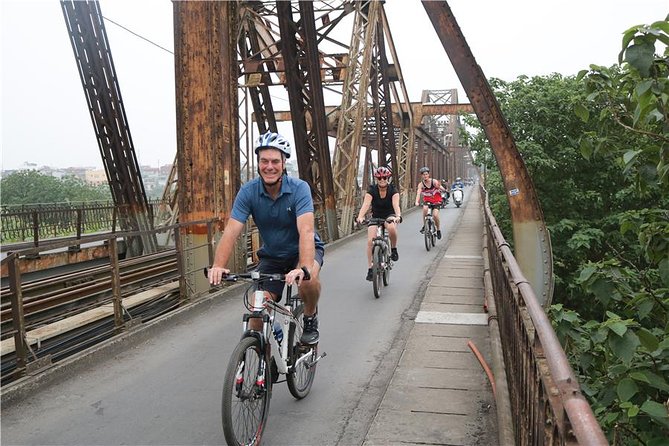
Hanoi, the capital of Vietnam offers a wide selection of both day cycling tours and short cycling excursions. The most popular Hanoi cycling tours are the half-day and one-day tours are arranged in Hanoi city and its surrounding countryside area.
May 28, 2025

Vietnam mountain bikes, also known as trailbikes are the workhorse category of mountain bikes. An all mountain bike is a mountain bike built to handle almost everything a mountain biker will run into on a full day of riding.
May 28, 2025

I had done my research before sign-ing up for a four day and three night cycling tour in Lao Cai province with Golden Trail Travel. My friends thought I was mad, cycling around one of the most mountains parts of northern Vietnam. But, the trip is well planned, so you’re never on your own. But I didn’t tell my friends that – I liked to think they pictured me huff-ing and puffing on my father’s rickety old Peugeot up and down the hills under a blazing hot sun.
May 28, 2025
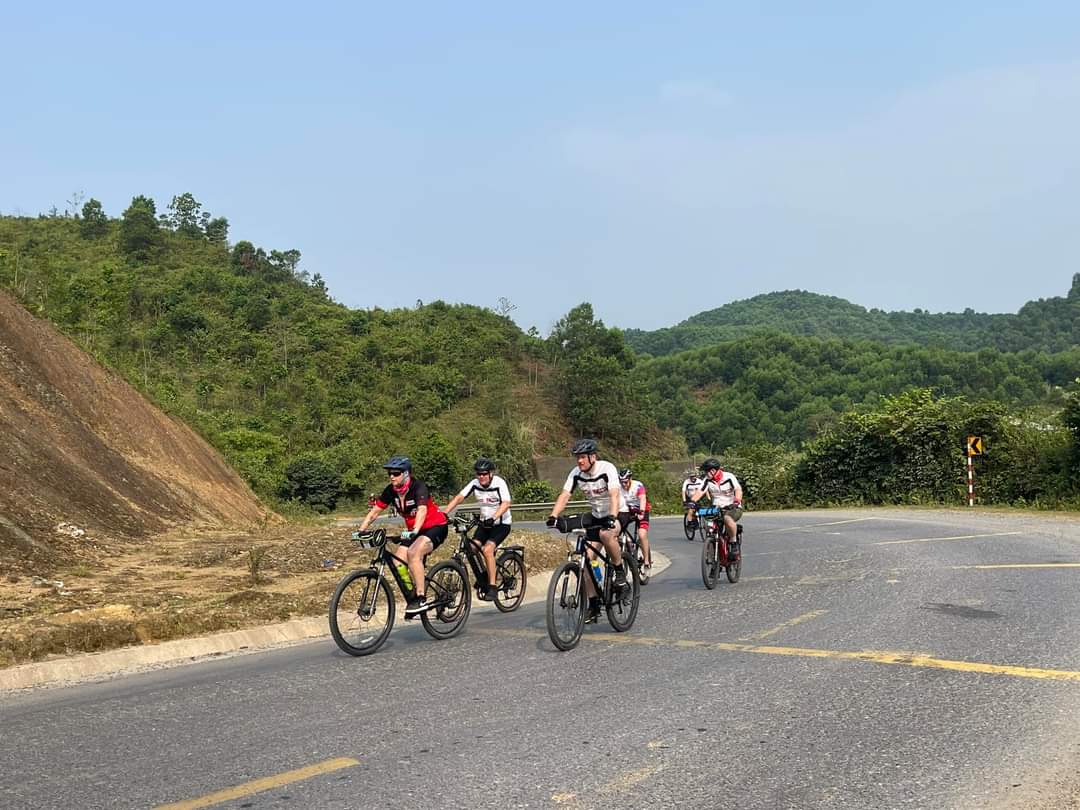
The best biking trails for cycling from Hanoi to Luang Prabang, Laos is the north-west Vietnam. After a visit to Hanoi, the capital of Vietnam, you can take the overnight train, usually departs at 21:00 pm in Hanoi and arrive around 5:00 am the following day.
May 28, 2025
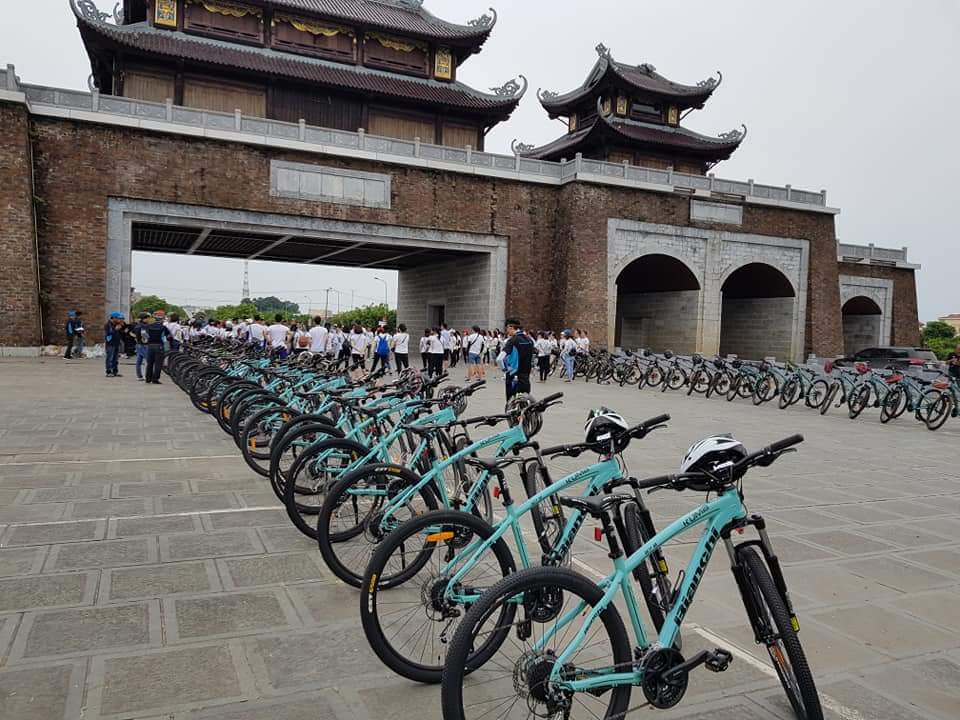
If you look for a bicycle hire service in Hanoi, then you have just found the right place. Vietnam Cycling is a Hanoi based tour operator offering both bicycle tours and bike hire service.
May 28, 2025
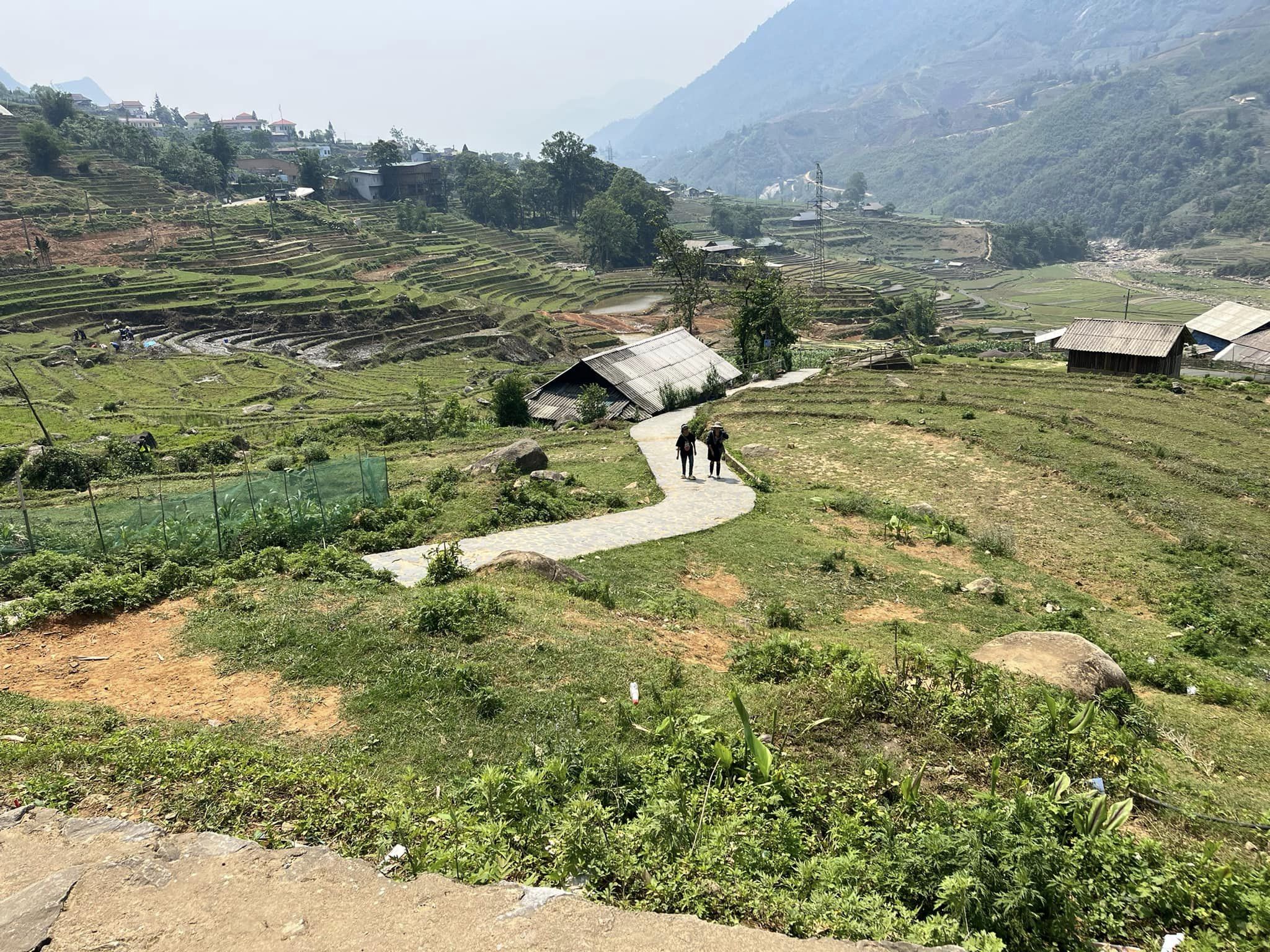
Cycling in Vietnam in March can be a truly unforgettable experience. The country is known for its beautiful natural landscapes, bustling cities, and rich culture, all of which can be explored by bike.
May 28, 2025
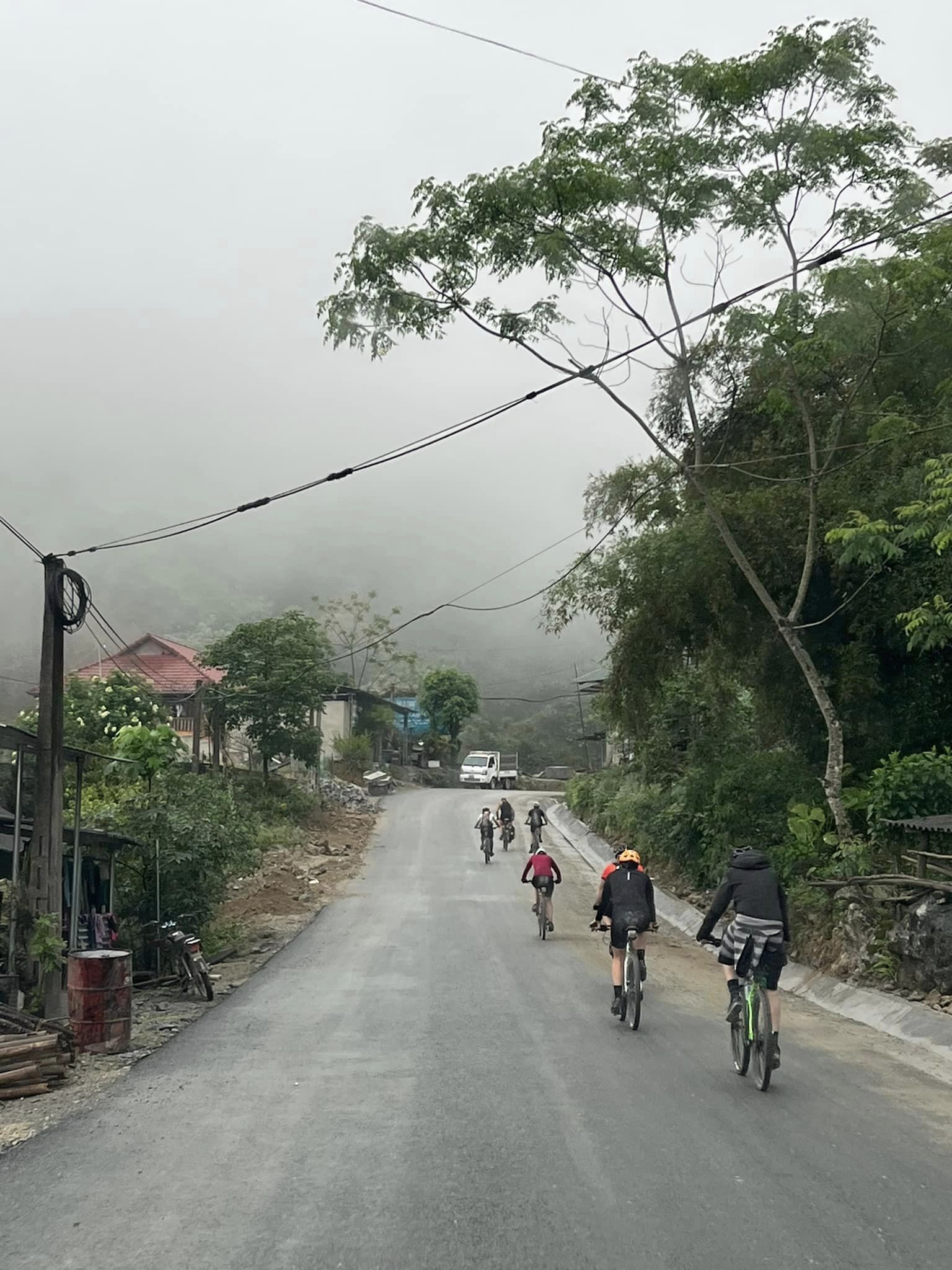
April is a great time to visit Vietnam and go cycling, as the weather is generally warm and dry, with temperatures ranging from the mid-70s to mid-80s Fahrenheit (25-30°C). The country is known for its beautiful natural landscapes, bustling cities, and rich culture, all of which can be explored by bike
May 28, 2025
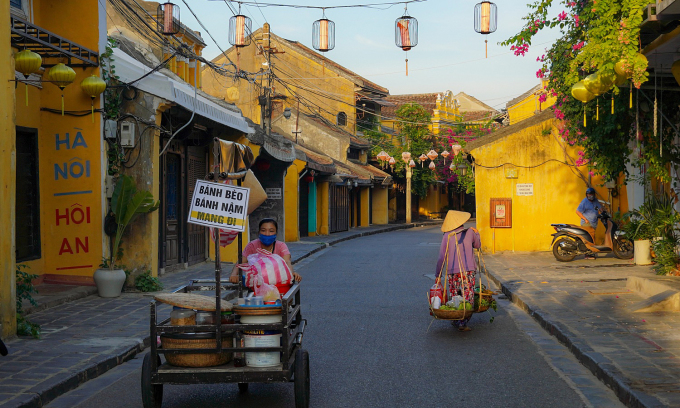
Architectural Digest has ranked Tran Phu Street in Hoi An, known for its century-old homes and monthly lantern festival, as one of the 71 most beautiful streets in the world.
May 28, 2025
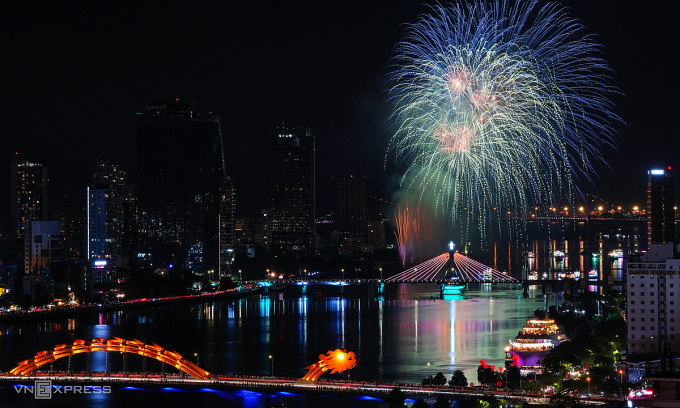
There are plenty of hotels, eateries, and homes in Danang that provide views of the International Fireworks Festival, but they are not free.
This evening, June 8, is the opening night of the Danang Fireworks International Festival.
Nearly 10,200 seats, double that of 2023, are available in the festival viewing stands, and all of the tickets for the last night have been sold.
May 28, 2025
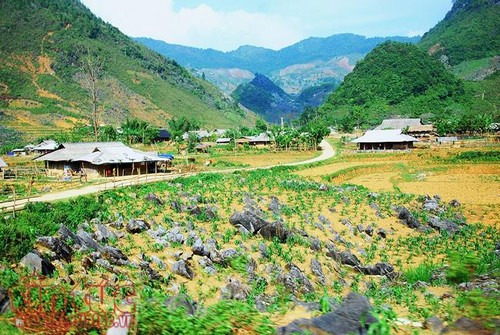
Tua Chua, a mountainous district of Dien Bien province offers great fun trekking homestay tours, hiking, walking experience in the north west region of Vietnam. Look for some jungle trek, trekking homestay, hill tribe trek in an off the beaten path destination in Vietnam? Tua Chua might be a perfect choice.
May 28, 2025
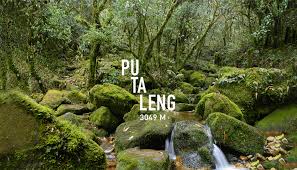
Pu Ta Leng Mountain is located in Hoang Lien Son mountain range, at Ta Leng village, Tam Duong commune, Lai Chau province. Its peak, at 3,049 meters above sea level is the second highest peak in Indochina.
May 28, 2025
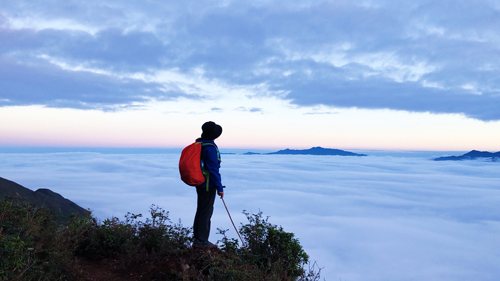
Ta Chi Nhu mountain is situated in Tram Tau District, in the northern mountainous province of Yen Bai, Vietnam. It is one of top places of mountain climbers and “cloud” hunters.
May 28, 2025
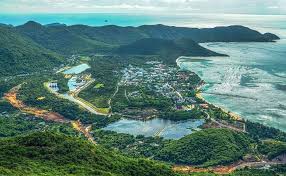
Con Dao National Park is a natural reserve area on Con Dao Island, in Ba Ria Vung Tau Province in coastal southeastern Vietnam. The park includes a part of the island and the surrounding sea. The national park is characterized by a diverse ecosystem. Many species of corals and especially the sea turtles, dolphins, and endangered dugongs are found here
May 28, 2025
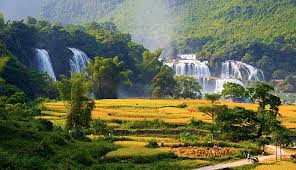
Trekking North East Vietnam to discover tropical forest, karst mountains and Tay, Nung, Dzao hill tribes at the north of the Red River Delta, Vietnam.
May 28, 2025
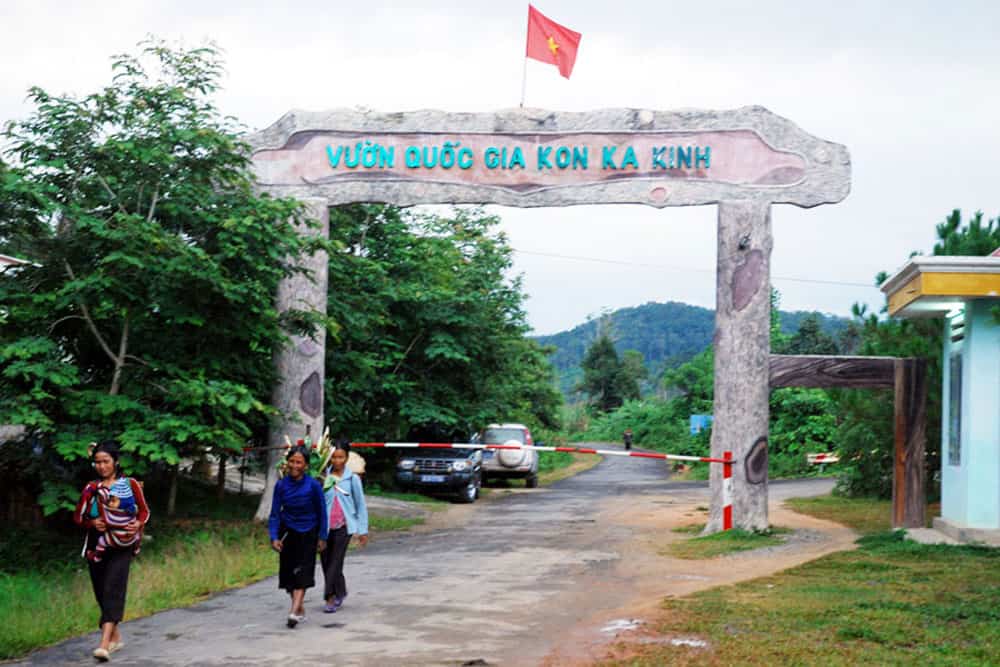
Kon Ka Kinh National Park is located in Kon Pne, Dakrong and Krong communes, K’Bang district, Ha Dong commune, Dak Doa district, and Ayun commune, Mang Yang district, Gia Lai province. The national park is situated on the Kon Tum plateau in the central Annamite mountains.
May 28, 2025
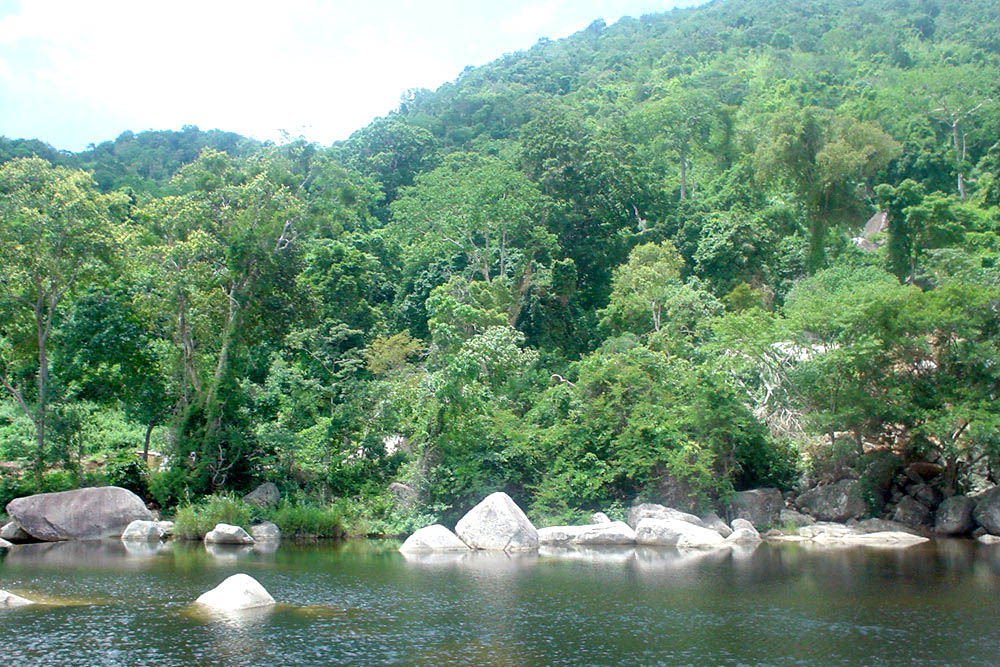
Chu Yang Sin National Park is located in Lak and Krong Bong districts, Dak Lak province, 60 km to the south-east of Buon Ma Thuot city. The national park encompasses a range of high mountains in the northern part of the Southern Annamite Mountains. The national park is centered on Mount Chu Yang Sin, which, at 2,442 m, is the highest point in the southern Annamites. The topography of the national park is characterized by steep slopes and narrow valleys.
May 28, 2025
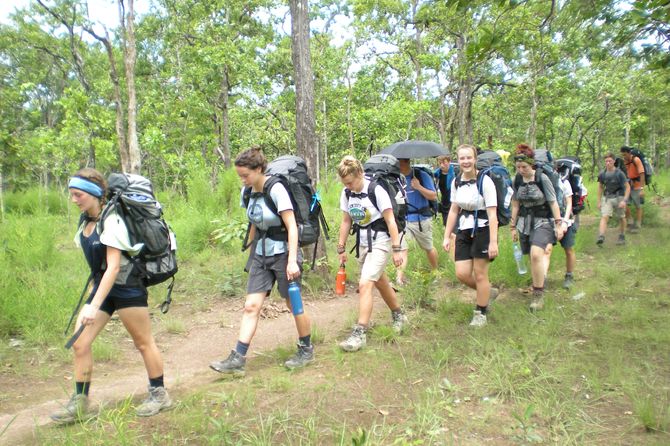
Chu Mom Ray National Park lies in the two districts of Sa Thay and Ngoc Hoi in Kon Tum Province, central highlands of Vietnam. It is the only national park in Vietnam which shares the border with the two countries of Laos and Cambodia.
May 28, 2025
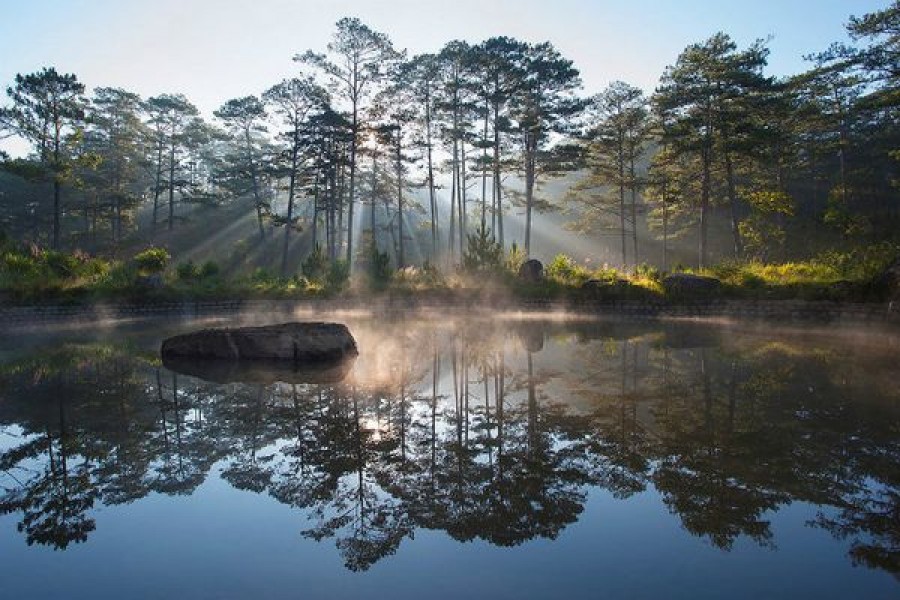
Bidoup Nui Ba National Park is situated in Lac Duong District, Lam Dong province in the central highlands of Vietnam. The park covers an area of 63,938 hectares, offering beautiful sceneries, stunning waterfalls, and diverse natural resources.
May 28, 2025
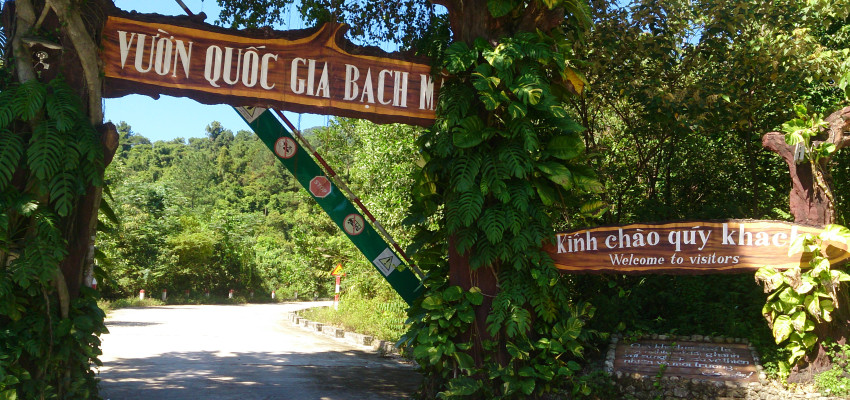
Bach Ma National Park is situated in the north central region of Vietnam, and the Annamite mountains. The national park lies on a high mountain ridge that runs west-east from the Laotian border to the East Sea at the Hai Van pass. This ridge interrupts the coastal plain of Vietnam, and, therefore, forms a biogeographical boundary between the faunas and floras of northern and southern Vietnam.
May 28, 2025
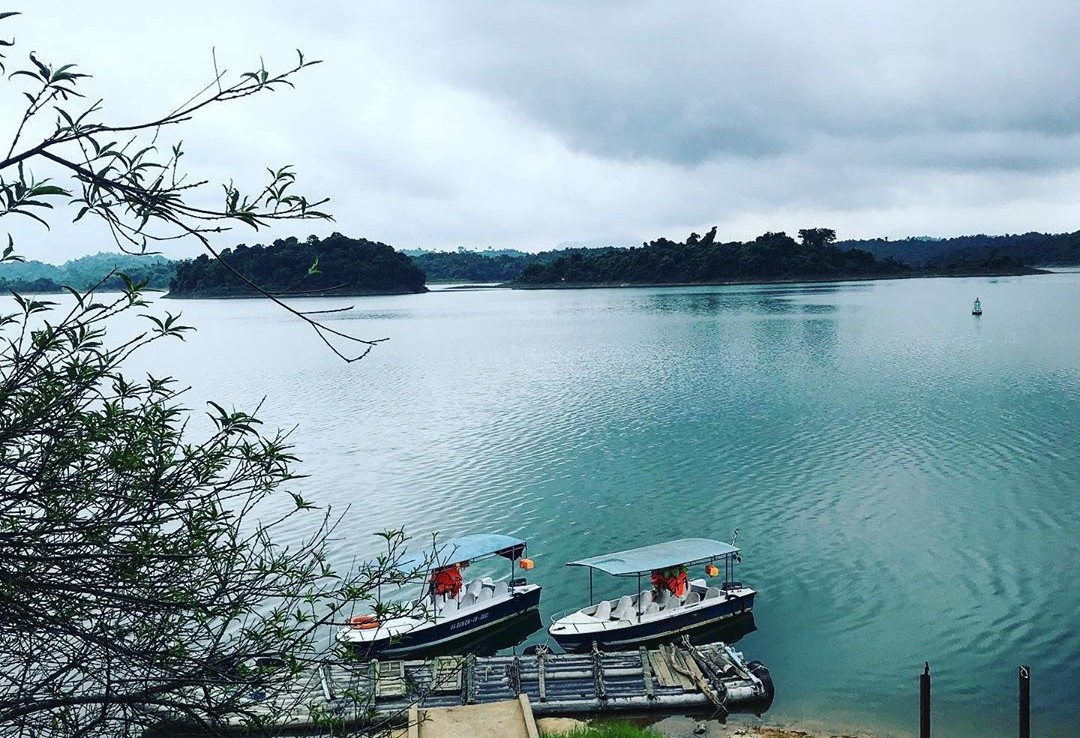
Ben En national park is situated in districts of Nhu Thanh and Nhu Xuan, Thanh Hoa Province about 200km from Hanoi. The park was established in 1992 and gradually expanded. It is not only a protected breeding ground for many rare creatures, but also an attractive destination for ecotourism.
May 28, 2025